Engagement Ring - In Progress
Setting
Stone
Purchase any Engagement Ring and receive a $250 Gift Card for your Wedding Band. Ends soon.
Deepen the well of love in the world.
We guarantee that every single purchase directly impacts one person's life by giving them access to clean water.
You’ve done your research on the 4 Cs and feel like you are ready to jump in and buy the perfect diamond for your partner. But, you notice the stone you’re considering has “strong blue” fluorescence…what does that mean?! Don’t worry! Some people find fluorescence to be intimidating because the best level of fluorescence changes with the color of your diamond. How does one know what’s best? But don’t worry, we will walk you through it so you can be confident in your purchase. Check out our gemologist’s two-step process for choosing the best fluorescence level at the best value below:
Fluorescence is a diamond’s tendency to emit a soft glow under ultraviolet light (like at the beach, tanning bed, or inside a dance club). The GIA grades diamonds with fluorescence on a scale from “none” to “very strong.” This grading has to do with how intense the glow is under UV light. So, a diamond with no fluorescence will not glow at all, whereas a diamond with very strong fluorescence will glow a lot.
Sometimes. Strong and Very Strong fluorescence is visible under strong UV sun or black light. However, less intense fluorescence is often not discernible except to gem experts.
Left: D colored diamond with very strong fluorescence in normal lighting Right: D colored diamond with very strong fluorescence in the sunlight
Diamonds with fluorescence look just like diamonds without fluorescence until they are under UV lighting. So, don’t let fluorescence worry you too much. In the instances where you can see fluorescence, it looks different depending upon light source. In other words, a diamond’s glow under the sun is very different than a diamond’s glow under a black light. Under harsh sunlight, diamonds with strong and very strong fluorescence take on a steely blue appearance. Under black light, diamonds with strong and very strong fluor glow like glow sticks!
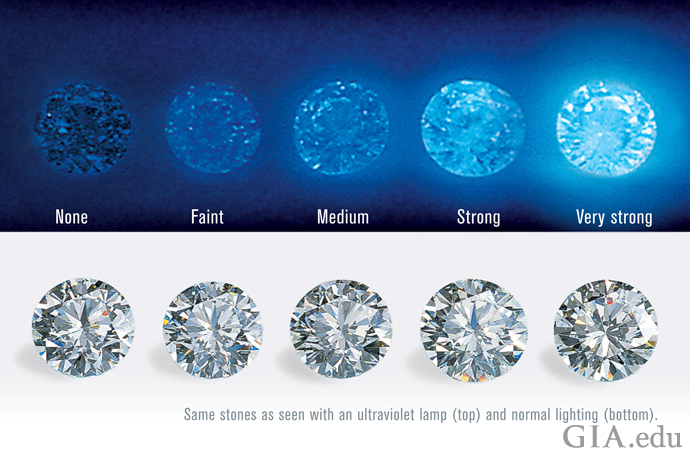
A GIA grading report showing different levels of fluorescence in normal lighting and UV lighting. Photo credit: Composite photo in UV- Maha DeMaggio/GIA. Composite photo in normal light- Harold and Erica Van Pelt/GIA
Diamonds with fluorescence glow because they have trace amounts of Aluminum, Boron or Nitrogen in them. However, not all diamonds fluoresce! In a study done by GIA researchers, only about 25% to 35% of 26,000 diamonds had any amount of fluorescence when exposed to UV light. In other words, having a diamond with fluorescence is pretty unique!
Blue is the most common color you can expect to see from diamond fluorescence. However, it is also possible for diamonds to have a yellow, pink, or red fluorescence as well. And, the color is not always extreme. It’s really only if you have a stone with strong or very strong fluor, coupled with high UV. For example, when you are outside in the summer (on a day with a 9 or 10 UV index), or under a black light in a nightclub.
Fun Fact: The famous blue Hope Diamond actually fluoresces cherry red!
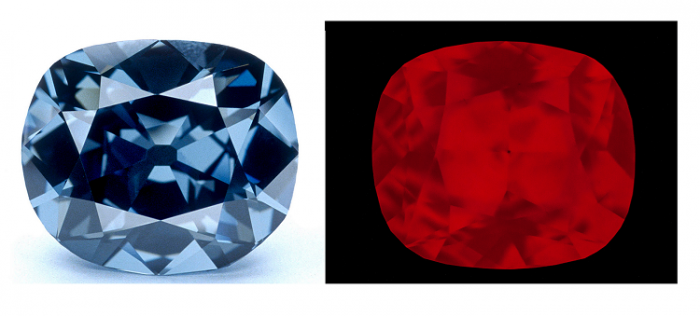
GIA says it is neither good nor bad. Our gemologist uses it as a tool to benefit color and price! Some people purposely buy a diamond that has fluorescence because they think it is cool. On the other hand, some people are strongly against a diamond with fluorescence because they want the whitest, “purest” stone possible. Then again, others have never heard of fluorescence and have no opinion. So, in reality, it is truly personal preference.
Fluorescence gets a bad rap, but it shouldn’t. Here’s our gemologist’s two step method for choosing a fluorescence level that looks great and offers great value:
Strong fluorescence causes “milkiness” or “haziness” in a small number of stones. However, contrary to popular belief – this does not occur in the vast majority of diamonds with strong or very strong fluorescence! The problem is, milkiness and haziness are not listed on GIA certificates (I know, crazy, right?) So, it’s very important to confirm lack of haziness or cloudiness with your jeweler. Notably, not all jewelers filter these stones out from their website, or teach their staff to properly identify it. As a result, make sure you ask your jeweler if they’ve checked your diamond, and that they know what they’re talking about!
Gemologist’s Note: Since haziness and milkiness are not desired qualities, Do Amore filters out these stones so our customers never even see them. Therefore, you can rest assured when searching the diamonds on our website, because they have already been checked by a gemologist and are free of milkiness or haziness!
If you are choosing a white diamond, go with blue fluorescence (or none at all). Then, choose the intensity of your fluorescence by color grade. Because blue fluorescence is…well, blue…it will cancel out the increasingly yellow tones in near colorless gems. In other words:
Choose none or faint if you want an ice white stone. Our gemologist’s personal opinion is that medium will look just fine, too. Choose strong or very strong if you want a blue glow. (Fun fact! These colorless stones with strong blue fluorescence were called “blue-whites” prior to 1938 when the FTC stopped allowing the term for fear consumers would think they were blue diamonds.)
You can choose a medium or even a strong to get max value! No need to pay the “none” premium – your diamond’s very slight tint will get evened out by the fluor! Strong fluor will still show in these stones, however, as they are very white!
Choose strong or very strong to get the max benefit of whitening and value! Strong and very strong fluorescence will both save you money and brighten your diamond up. However, as fluorescence is only a glow, and also only visible under certain lighting, unfortunately you cannot expect it to make your I or J color diamond look colorless.
Unless you are buying a warm-colored diamond (yellow, orange, pink, red), do not choose a diamond with yellow fluorescence. Yellow fluorescence as a higher incidence of resulting in haziness and can make a stone appear oily.
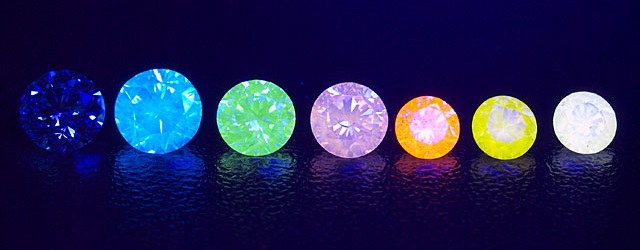
Selecting a diamond with fluorescence is a good way to save a little money on a stone with great specifications. As you may already know, an excellent cut diamond that is colorless (D, E or F) and has a high clarity grade will typically be on the pricier side. However, if you take these same specifications and find a diamond that also has strong fluorescence, you can save quite a bit of money. In addition, a warmer colored stone (I or J) that has strong blue fluorescence can give the illusion that a stone is whiter than it is. It is easier to save a drastic amount of money on colorless stones. However, the warmer you go on the color scale, the less amount of money you save.
Carats | Cut | Color | Clarity | Fluorescence | Total |
1.00 | Excellent | F | VS1 | None | $6,619 |
1.00 | Excellent | F | VS1 | Strong | $5,883 |
1.00 | Excellent | I | VS1 | None | $5,690 |
1.00 | Excellent | I | VS1 | Strong | $5,204 |
Not typically. Because lab grown diamonds are typically Type II, they have less trace elements (remember all that Aluminum, Boron, etc. from above?) to create fluorescence. So, most lab diamonds are graded “none.”
Gemologist’s fun fact: In the one lab diamond we’ve seen to possess fluorescence, it was listed as part of the color grade (bringing to mind the “blue-white” controversy above).
If you want a whiter, less expensive near colorless diamond, yes! Diamonds with fluorescence are a unique choice that offers value and quality without having to give up other great specifications in a center stone. Ultimately, though, it is up to you! If you are looking to save a little money while still getting a beautiful diamond, choosing a stone with some fluorescence could be a great option for you! Remember, the most important aspects to consider when buying a diamond are (in order of importance) the 4Cs: Cut, Carat, Color, and Clarity! And, fluor can be a great tool to maximize carat and color. To recap, here are some pros and cons about fluorescence:
| Pros | Cons |
| More Affordable (Especially in Colorless Range) | Resale Value May Be Lower |
| Unique Diamond Characteristic | Could Have Milky/Hazy Appearance (Don’t Worry, We Check This) |
| Whiter Appearance in a Warm Diamond | Some Diamond Purists Prefer No Fluorescence |
Absolutely! Send us a note here, or email us at care@doamore.com, and we can answer all of your fluorescence questions and choose a great stone for you. Feel free to ask for our gemologist, Corinne, too. She’d be happy to answer all of your most technical diamond questions – fluorescence and all!
Verifiably Ethical & Sustainable
Guaranteed 1:1 Impact
Personalized 1:1 Customer Service
handcrafted & american-made
you before us, always
Diamonds, Gemstones, & Metals
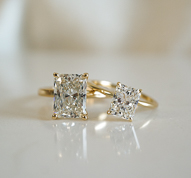
Every piece of Do Amore jewelry begins by not hurting the world. All our natural diamonds are either ethically sourced in Canada, recycled to eliminate additional demand, or accompanied by a blockchain ledger showing every hand your diamond passed through, proving your stone is truly conflict-free.
We also offer sustainable lab-created stones and guarantee all precious metals are recycled to eliminate the environmental impact of mining. Since March 2022, we carry absolutely no Russian diamonds and continue to urge the industry to follow suit.
Clean Water
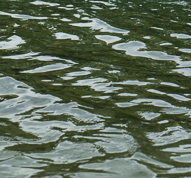
We desire to deepen the well of love in the world. We guarantee that every single purchase—whether engagement ring, wedding band, or piece of jewelry—directly impacts one person’s life by giving them access to clean water.
We do this by directly matching jewelry purchases to people in communities to ensure our funding has a one-to-one impact. We also show you the exact GPS coordinates and a photo of the water well your ring or piece of jewelry helped fund.
Customer Service
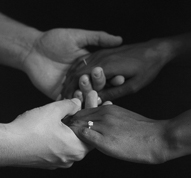
As a small, 100% founder- and employee-owned team, one-to-one encounters are at the heart of our values. Whichever way you want support throughout your engagement ring or jewelry purchase process, our team is here to accommodate you.
From high-touch to hands-off, video calls to text messages, you have our dedicated, responsive team on your side from the moment you start your search, to the day your well is built, to the time we meet again.
Engagement Rings, Bands, & Jewelry
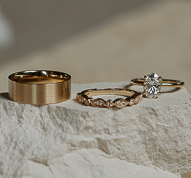
Every Do Amore design, whether one of our own or unique to you, is beautifully handcrafted in America and made specifically for you. Each ring is made to order, every time.
From classic to custom, you have the option to select from dozens of gorgeous settings or work with our design team to create something entirely bespoke. Plus, you are always covered for free inspections, polishing, cleaning, stone tightening, rhodium-plating, and resizing for life.
Our Promise

We care about what matters most to you, not what’s easiest for us. If it’s a minor change to a setting or arriving at a completely custom design, we work to ensure you get precisely what you love.
From statement-making to understated, we have options at any price point. Plus, you always have our team on your side searching to bring you every stone within your specifications. We also offer 30-day returns and a limited lifetime warranty to cover you in the rare event of a manufacturing defect.